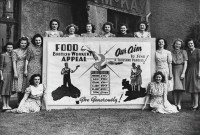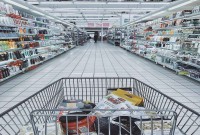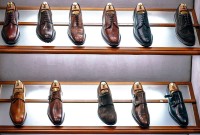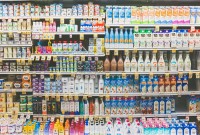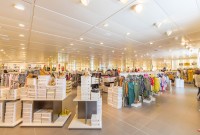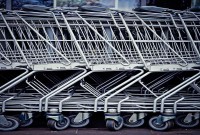- Home
- Business Processes
- Industry Knowledge
- Aerospace Industry
- Automotive Industry
- Banking Domain
- BFSI Industry
- Consumer/ FMCG Industry
- Chemicals Industry
- Engineering & Construction
- Energy Industry
- Education Domain
- Finance Domain
- Hospitality Domain
- Healthcare Industry
- Insurance Domain
- Retail Industry
- Travel and Tourism Domain
- Telecom Industry
- Leadership Skills
- eLearning
- Home
- Industry Knowledge
- Retail Industry
- History of Consumer Industry
History of Consumer Industry
All of us are consumers, from cradle to grave, to be more precise, from the womb to grave or cremation. In a sense, the history of the consumer is the history of mankind. Consumers are the largest economic group in any country. They are the central point of all of our economic activities. But the very same consumers ate the most voiceless group also. The nature of consumer in terms of needs, consumption patterns, and problems has been changing and evolving along with the social and economic development in the course of history.
The consumer in the Early Ages
The history of the consumer in the sense of one who consumes anything may be said to have started with the history of mankind. In pre-historic times, humans gathered food and other necessities from nature directly. As years passed they started producing/ preparing their food and other articles from naturally available materials. Thus production was for self-consumption and for immediate dependents. The man was both a producer and a consumer at one and at the same time. Therefore, there were no problems related to the sale and purchase of goods. With the passage of time, the needs of men and women increased and became varied. What they produced also left a surplus. Also, they needed to stay in one place to look after their produce. Gradually individuals realized that they were not capable of producing on their own everything they needed. So they began socializing and started mutual dependence. This led to group living which resulted in the sharing of responsibilities with others and exchanging individual products with that of others, to fulfill varied needs. Thus, the system of Barter is the exchange of goods for goods. With time there arose the need to establish the equivalence of goods according to their value.
Industrial Revolution
The Industrial Revolution which started in England in the late 18th century and spread to Western Europe in the early I9th century brought about unprecedented changes in the lifestyle of people. The fast pace of progress in science and technology and the consequent mechanization of production led to mass production of goods.
This, in turn, required marketing of goods that have been produced and drew a clear line of distinction between the producer and consumer. Barter gradually gave way to money as a medium of exchange. Coins and paper currency came to be used for the purchase of goods and hiring services. The emergence of standards for goods and Weights and Measures or the sale of goods was logical outcomes in the process. Issues regarding the choice of goods, availability of essential items, profit-making, etc. became important soon after industrialization also brought in its wake a number of effects that completely changed the face of the market and the consumer environment. The markets offered a huge variety of goods for consumers to have their choice. At the same time, consumers were subjected to all kinds of selling pressures and persuasive methods of sales promotion by competing producers and sellers. The modern-day concept of the consumer as buyer and user of goods from the market may thus be said to have emerged from industrialization. This has also given rise to what is called Consumerism.
Advent of Consumerism
The term consumerism refers to the hidden range of activities of government, business, and independent organizations that are designed to protect individuals from policies that infringe upon their rights as consumers. Since the introduction of modern technology and growth or large scale enterprises, mass production and distribution of goods and services have contributed to making business activities more competitive and highly complex. Hence, their regulation and control have increasingly become more important. The following factors may be said to have contributed to the growth of consumerism:
- The spread of education and knowledge
- Rising incomes have increased the purchasing power of people
- An attitude to expect better quality
- A large variety of products
- Complex features introduced by new technology
Consumers in the Modern Age
Thanks to the Industrial Revolution, multiple varieties of goods are produced and marketed today. An average consumer is exposed to varieties of manufactured goods in the market place. To a certain extent, the sales promotion techniques adopted by sellers influence the buyer's decisions. Not only in respect of goods, but today's consumer is increasingly dependent also on common utility services like electricity and water supply, transport, communication, banking, insurance, hospitals, etc. Those who are producers also need services both for their private use as well as for production purposes. Similarly, providers of services depend on producers to have the means necessary for providing services. For example, producers of trucks and buses require electric power, communication, system, water supply, etc. On the other hand, providers of transport services require buses, trucks, cars, etc. which are manufactured by producers.
Evolution of Consumer
In a way, today's consumer combines the role of the producer as well as the consumer and may be called a "Prosumer". A doctor renders medical service to a restaurant owner but for his refreshments, he becomes a consumer in that very restaurant. A textile shop keeper sells cloth but is also a consumer of other goods and services. Thus, today most people are prosumers i.e., producer and consumer rolled into one. All professionals are service givers and consumers too.
As most of us are both consumers and professional service providers, a dichotomy prevails in us. As consumers, our expectations from the sellers of goods and professionals are different from our position as sellers or service givers in relation to buying consumers. It is largely because of lack of awareness of this dichotomy that we often alienate ourselves from the very environment which should give us security and protect us from exploitation. We expect the marketer to be accountable without subjecting our own role as a service or good provider to scrutiny. Unless we become aware that the concept of the pure consumer is of limited validity, it may be difficult to orient ourselves towards efficiency and quality in goods and services.
Related Links
You May Also Like
-
Retailing is the combination of activities involved in selling or renting consumer goods and services directly to ultimate consumers for their personal or household use. In addition to selling, retailing includes such diverse activities as, buying, advertising, data processing, and maintaining inventory. This article explains the meaning of retail and its etymology. Understand the meaning and constituents of the retail industry and the role it plays in the economy of any nation.
-
Retail Industry: Key Performance Metrics
You cannot manage what you do not measure and cannot measure what you do not define. Learn the key performance metrics for the retail industry like Sales per square foot, Gross margins return on investment, Average transaction value, Customer retention, Conversion rate, Foot traffic, and digital traffic and Inventory turnover, etc. These metrics are used across the globe by key industry players to track and improve their performance.
-
All of us are consumers, from cradle to grave, to be more precise, from the womb to grave or cremation. In a sense, the history of the consumer is the history of mankind. Consumers are the largest economic group in any country. They are the central point of all of our economic activities. But the very same consumers ate the most voiceless group also. The nature of consumer in terms of needs, consumption patterns, and problems has been changing and evolving along with the social and economic development in the course of history.
-
Consumers benefit from retailing as retailers perform marketing functions that make it possible for customers to have access to a broad variety of products and services. Retailing also helps to create a place, time, and possession utilities. A retailer's service also helps to enhance a product's image. Retailing has a tremendous impact on the economy. It involves high annual sales and employment. Learn the importance of the retail industry in this article.
-
FMCG or consumer packaged goods (CPG) are products that are sold quickly and at relatively low cost, examples include non-durable goods such as soft drinks, toiletries, and grocery items. They generally sell in large quantities, so the cumulative profit on such products can be substantial and these industries often operate on thin margins.
-
The consumer goods sector is a category of stocks and companies that relate to items purchased by individuals and households rather than by manufacturers and industries. These companies make and sell products that are intended for direct use by the buyers for their own use and enjoyment. This sector includes companies involved with food production, packaged goods, clothing, beverages, automobiles, and electronics. Nestle, Procter & Gamble, and Pepsico are some of the world’s largest consumer goods companies in the world.
-
Retail Industry: Strategies for overcoming challenges
To stay competitive in this ever-evolving landscape, it is imperative for retailers to deliver a seamless customer experience and provide the right services and products at the right time. Learn the strategies for overcoming challenges for the retail industry. Retailers must use technology and solutions to revive their businesses in the COVID-19 world. An omnichannel marketing strategy can help retailers reach a wider audience for their brands.
-
Challenges in Consumer Goods Industry
There are tens of thousands of general consumer products manufacturers in the United States. They compete to develop the best products at the most affordable price for the greatest number of consumers. Challenges for these organizations include meeting the changing demands of customers, maneuvering through a consolidating market, and executing strategies to grow profitably.
-
Retail Industry - Business Model
A retail business model articulates how a retailer creates value for its customers and appropriates value from the markets. In retail, a business model would dictate the product and/or services offered by the retailer, the pricing policy that he adopts. Many different types of retail establishments exist, and, the overall industry has seen a significant blurring of the boundaries that separated the wide range of retail businesses. Understand the key business models adopted by the retail industry. Understand the distinctive ways that retail industry players use to reach to the end consumer.
-
Retail Industry: Current Challenges
Today consumers are choosing multichannel buying experiences and expect that to be a seamless experience. To attract customer loyalty, retailers need to provide an experience that stands out from others. Learn the challenges faced by the retail sector today. Multi-channel sale avenues, changing consumer behavior, technological advances, rising competition, rising frauds, and supply chain management are some of them that require immediate attention.
Explore Our Free Training Articles or
Sign Up to Start With Our eLearning Courses

About Us
Learning
© 2023 TechnoFunc, All Rights Reserved

